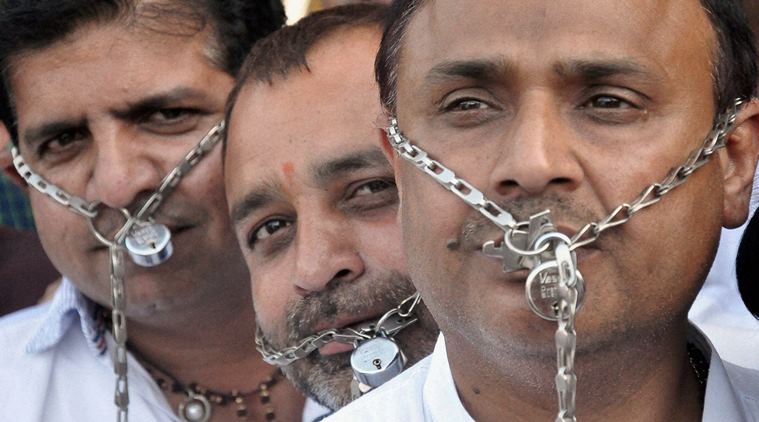
The indefinite strike by jewellers since March 1, across the country to protest the excise duty of one per cent proposed in the union budget, has hit the artisans the worst, most of who are from Bengal and are returning home with no earnings.
Seen as the hub of gold and diamond jewellery, the striking traders are not willing to give in till the government announces a rollback, and the strike has manifested in innovative protest forms like the jewelers in Bardoli selling pakoras and vegetables, sherbet in Rajkot, and imitation jewellery in Vadodara.
In 2012, the union government had imposed a one per cent excise duty which it was forced to rollback after jewelers protested. This time, the protest is also to show their unhappiness against showing of pan cards on every purchase over Rs 2 lakh.
Assuming it has clout, given the allegiance of the jewellery businessmen with the ruling BJP, the Gujarat gems and jewellery associations initally were confident that their grievance will be addressed. However, after a month passed with jewellers spending more time agitating than selling wares in their shops, around 2000 jewellers associated with the BJP decided to “quit” the party in Rajkot, which is internationally known for its unique hand-made gold and silver ornaments that constitute 85 percent of the total jewellery production in India.
A group of jewellers met the newly-appointed Rajkot-unit president Kamlesh Mirani Friday afternoon and submitted resignations en masse.
Sources say that if the agitation does not result in a roll-back, then it could lead to an escalation in the prices of gold and diamond jewellery as the industry has decided to pass the tax on to the customer.
Gujarat is a leading state in India in the gems and jewellery sector, contributing nearly one-third of the total exports. Surat, Ahmedabad and Rajkot are the major gems and jewellery clusters. Apart from these centres, Khambhat is known for its gemstones cluster, while Valsad is also a cluster for all types of jewellery. As far as Gold and Platinum jewellery is concerned the jewellers in the state are involved only in the fabrication and sale in the value-chain, while in the diamond and silver jewellery segment, the local units are also into processing jobs as well.
This market was already hit hard in the recession since 2008, especially the diamond sector, and was looking for respite in a budget by the BJP led NDA.
The Bardoli Jewellers Association saw its members selling 24 carats pure pakoras and vegetables, on carts which had banners “Beti Bachavo, Excise hatavo” (remove excise, save daughters), playing on an emotional note and another banner saying if customers bought stuff more than Rs 10, they would have to show their pan cards, to mock at the mandatory pan card proposal .
“There are about 25,000-30,000 small and big jewellers in Gujarat. The marriage season is at its peak and we are not doing any business. Due to the strike which is now almost a month old, a number of artisans including the migrating polishers and craftsman have returned back to West Bengal as they are unable to find work. Our industry is the third largest in the country in terms of value and it is sad that a solution has not been found yet. All we are saying is to keep the smaller players out of the increase in excise,” says Ahmedabad-based Shantibhai Patel, president of Gem and Jewellery Trade Council of India.
Surat Jewellers Association president Tushar Choksi said, “The exact hit to the industry in the strike period so far, cannot be captured in a figure, but it is worth thousands of rupees. Business has definitely been affected due to the ongoing strike, and the most hit are the smaller shop keepers who do business on a day to day basis and they are facing losses”
Choksi says that the business hits a peak after Navratri and it continues till February month, much of which is the marriage season. “In March we don’t get much business, as it is ending of financial year, but business picks up again April, May, June and July”, he says.
[Source:- Indianexpress]
